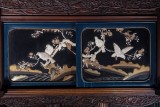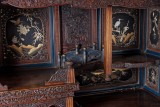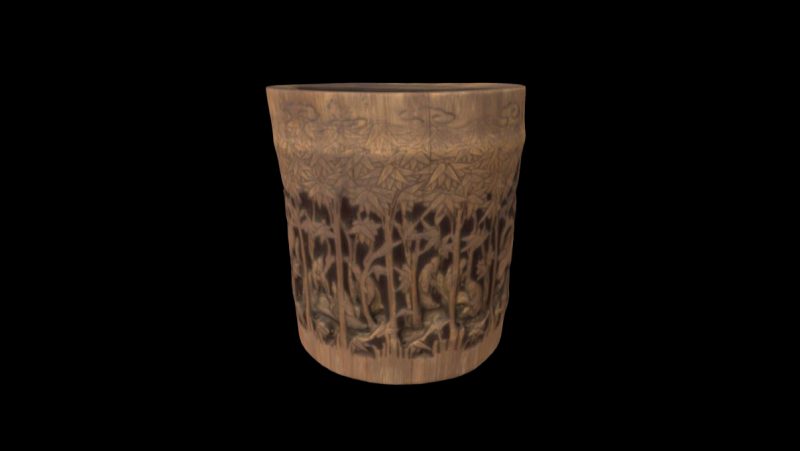This large, tall Shibayama style cabinet was built during the Meiji Period (1868-1912), specifically at the end of the 19th Century. The Shibayama style was created by Onoki Senzo (1772-1781) in the Shibayama region, currently the Chiba Prefecture, near Tokyo. Called shodana or chigaidansu, their purpose was to store utensils used during the tea ceremony. Because of their size, they were destined for houses with high roofs, which reflects the changes in the Meiji architecture.
This example has lacquer and takamakie paint with a high gold and lacquer content, and is accompanied by delicate mother of pearl and bone carvings. During his trip, Pedro del Río Zañartu paid special attention to the finishing and material of furniture, particularly to the lacquer technique, a term he spelled several ways in his journals, which leads us to believe that this was a novelty for him.
Shibayama style cabinet
Shibayama style cabinet
Japan, Japón
Periods: Late 19th Century
Dimensions: Total height 2.30 mt., width 155 cm.
Materials: lacquer and mother of pearl, Wood








